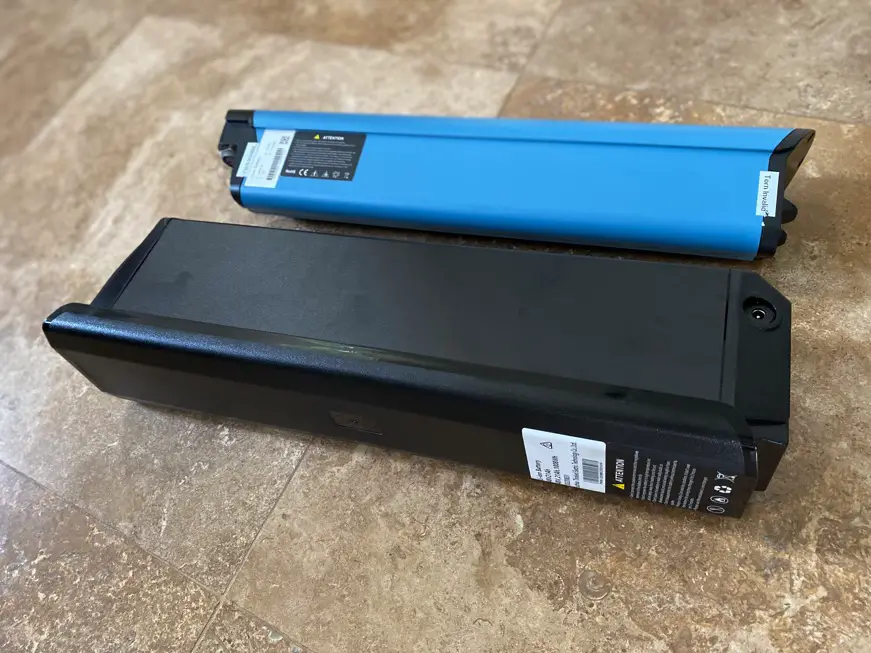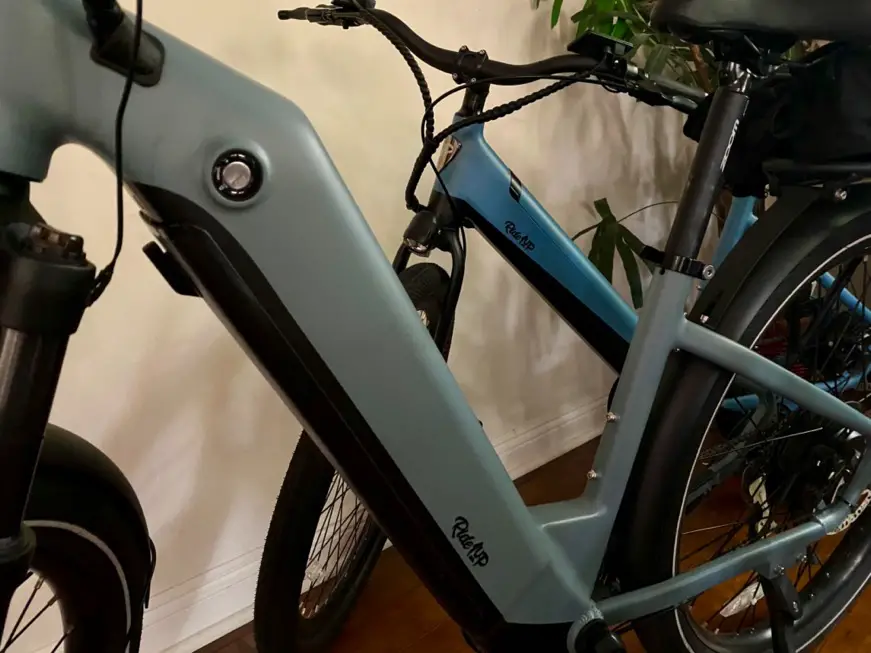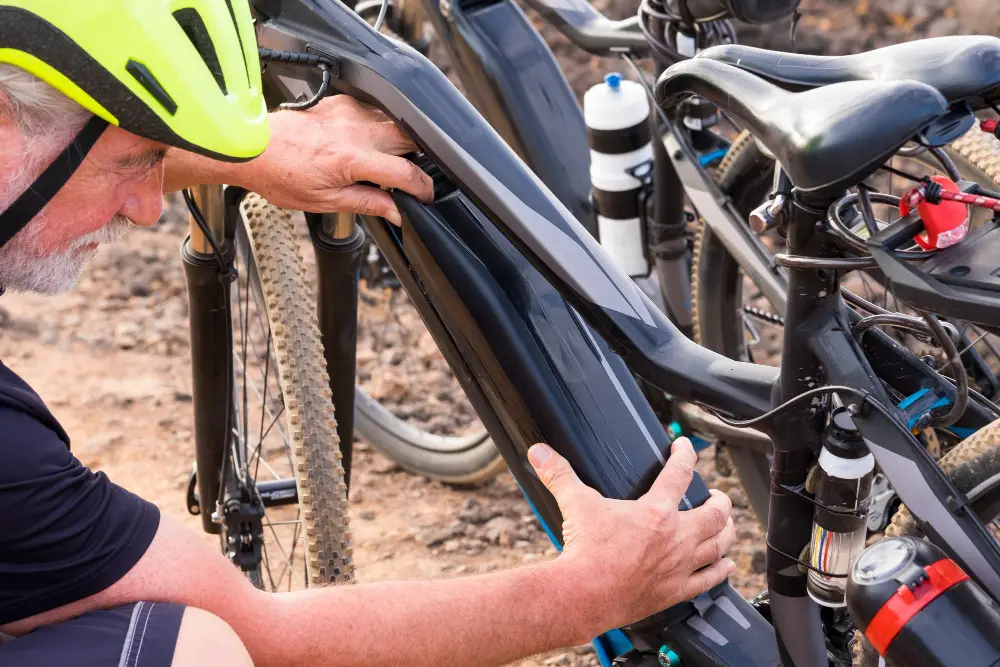Every e-bike rider wants to make their e-bike battery last as long as possible. They’re expensive and therefore not easily replaced. So it helps to know the typical e-bike battery life and how to make it last as long as possible.
A typical e-bike battery life is around 4-5 years. On the shorter side, it is about 2 years, and on the longer side, it is up to 8 years. This is true if you have a good quality battery, use it properly, and ride it moderately.
Read on to find out more about how long your electric bike battery should last and battery warranties. Plus, learn the top tips to make your e-bike battery last longer.
How Long Do E-Bike Batteries Last?
On average, the typical e-bike battery life is around 4-5 years. And if you are using a good quality battery, you should at least expect a good range for many years if you ride moderately and take good care of it.
So, you don’t have to say goodbye to your e-bike battery after only 2 years. In fact, the high-quality Bosch battery brand suggests that the battery should be good for around 10 years or 1500 charge cycles. And even after 1500 charge cycles, there’s a chance that the battery will continue to work.
Did you know? Bosch offers a guarantee of 2 years or 500 charge cycles (whichever comes first) for their batteries.
However, the primary point to consider here is the gradual loss of battery capacity over time. In other words, as your battery ages, you can’t go as far as you used to go on one charge. The range of the battery will continue to decrease.
Read Here: How Far You Can Go With An E-Bike In One Charge?
What is the Average E-Bike Battery Range?
Now, the most important consideration of an e-bike’s battery life is discussed in terms of the charge cycles. On a rechargeable battery, a charge cycle comprises a complete charge plus a total discharge (from 100% to 0%).
On one complete charge cycle, the battery offers you a specific range of distance you can go, based on your riding style and how much pedal assist and throttle you use. Generally, when you pedal in a relaxed way, most e-bikes can run about 22-50 miles on one charge. This is the charge-holding capacity of the battery.
Over time, with usage, it starts to degrade, and the battery capacity slowly decreases.
So let’s suppose, on average, your new battery used to offer around 22 miles of riding distance on one charge. After one or two years, you should expect the battery to lose some of its capacity. So now, on a single charge, the battery may offer only a 20-mile range.

What Are the Types of Electric Bike Batteries?
There are two different types of rechargeable batteries suitable for today’s e-bikes. These include lead-acid (PbA) and lithium-ion (Li-ion) batteries.
Although some electric bicycles still use lead batteries, lithium-ion batteries are the most widely used for newer model e-bikes. Lithium batteries, in general, hold up to 1000 complete charge cycles.
How Many Miles Do Electric Batteries Offer In Their Entire Life?
A lithium battery typically offers over 1000 charging cycles before you need to replace them. Let’s suppose you are getting a 40-mile range from one full battery charge.
Calculating further, you can expect 40 (miles) X 1000 (cycles) = 40,000 miles of total range in the entire life of your battery.
Of course, these figures are just rough estimations of how far you can go on one battery over time, without refurbishing it or replacing it.
Some e-bikes can even run up to 100+ miles on a single charge. So if we calculate based on that long range, a typical e-bike battery should last about 100 X 1000 = 100,000 miles.
Different size ebike batteries will have different ranges and lengths of battery life.

Do E-Bike Batteries Wear Out Even If We Don’t Use Them?
Yes, e-bike batteries can wear out even if they’re not being used. It happens because of the phenomenon known as self-discharging, in which internal chemical reactions decrease the stored battery charge without any connection between electrodes or external circuits.
Batteries generate electricity because of the chemical reaction happening inside the cell. They then store the chemical energy and convert it into electrical energy.
However, it’s essential to note that a lithium-ion battery can gradually and eventually discharge even if you don’t use it. Further, if you store an electric bike battery for a long time, irreparable harm can occur because of internal chemical reactions.
Do E-Bike Batteries Have Warranties?
E-bike batteries typically have warranties, but they vary from brand to brand. The warranty period is usually based on a set time frame or amount of charge cycles the battery goes through.
Generally speaking, with batteries, you are offered the shortest warranty period. However, you may be able to purchase an extended warranty.

Here’s a general guide on the battery warranty period based on the battery type:
| Battery Type: | Typical Warranty Period: |
| Lead Acid Batteries | 6 Months |
| Li-Ion Batteries | 12-24 Months |
Please note that this can vary based on the battery brand and quality, so check with battery-specific brand guidelines.
Here are some examples of battery warranty periods from different e-bike brands to give you an idea of what to expect:
| Battery Brand: | Warranty Period: |
| Rad Power Bikes | 1 Year |
| Aventon | 2 years |
| Electric Bike Company | 5 years! |
| Ride1Up | 1 year |
| Trek Bontrager | 2 years / 600 charge cycles (whichever comes first) |
| Lectric | 1 Year |
Be sure to properly check the exact wording of warranty policies provided by e-bike manufacturers. That way, you will know what to expect and can add battery replacement or repair to your electric bike maintenance cost.
You can research this aspect on the official website of the brand of each e-bike battery.
How Do I Know When To Replace My E-Bike Battery?
The best way to know when you should replace your e-bike battery is when it doesn’t offer enough range.
With some high-quality batteries (like Bosch), there is an integrated Battery Management System (BMS) through which you can know the current battery capacity and how many charge cycles the battery has gone through.
But even if you have an inexpensive battery, you’ll experience your battery dying sooner than expected. Pay close attention to this to avoid any sudden surprises.
Recommended Read: What to Do When Your E-Bike Battery Power Dies While Riding
How Do I Make My E-Bike Battery Last Longer?
You can make your electric bike battery last longer by taking good care of it and following these battery care tips.
#1. Avoid Overcharging Your Battery
Overcharging can shorten an e-bike battery’s lifespan, as well as make it overheat, especially for older or cheaper batteries. In these cases, avoid leaving it plugged into a wall outlet longer than necessary.
Luckily, however, most modern e-bike batteries are equipped with smart functionality, which enables them to stop charging once the total charging capacity is achieved.
That said, energy in a battery slowly discharges on its own even when you don’t use it. And when you leave it on the battery charger, it can resume charging once again when the stored energy level decreases below a certain point.
Long story short, keeping the battery connected to the charger even after 100% is achieved won’t help keep it charged. The natural on-off cycle will ultimately lower the overall battery energy capacity when it doesn’t need further charging.
Find Out: Can You Charge An E-Bike Battery Overnight?
#2. Store Your Battery Away From Extreme Temperatures
Severe hot or cold temperatures can hurt the overall performance of the battery. Generally, lithium batteries prefer relatively cooler temperatures. So to maximize the battery life, be sure not to let it get too hot.
Generally, the optimal temperature for storing batteries is between 32 degrees Fahrenheit and 77 degrees Fahrenheit.
#3. Keep the Battery In A Dry Location
Humidity is another factor you should consider as it isn’t great for electrical components. Thus, ensure that your e-bike is stored in a dry location, preferably indoors, or in a garage or bike shed.
Also, inspect the battery contacts once in a while to keep an eye on corrosion and remove it whenever you notice it.

#4. Use The Boost Mode In Your E-Bike Minimally
Many e-bikes come with a boost mode, or throttle, that helps in accelerating to the max speed of your motor in just a few seconds.
Even though the boost mode is a great feature to use every once in a while, it discharges the e-bike battery quickly and minimizes its lifespan. So try to use it less often if your goal is to maximize the battery life!
#5. Avoid Fully Discharging Your Battery
For better battery health, you should avoid fully discharging your battery frequently.
It’s okay if the battery is fully discharged once in a while. But be mindful that it is harmful to discharge your lithium-ion e-bike battery to 0% on a regular basis or when leaving it in storage.
Instead, you should perform shallow recharges and discharges. This means it is better to charge your battery after every few rides to avoid full discharge. The shallow charges and discharges don’t put much stress on the battery and thus make it last longer.
Final Thoughts
In short, your e-bike’s battery should easily last three to five years with moderate riding and adequate battery maintenance.
However, if you take good care of it and use a high-quality battery, you can expect it to live even longer.
More Helpful E-Bike Resources For You:


